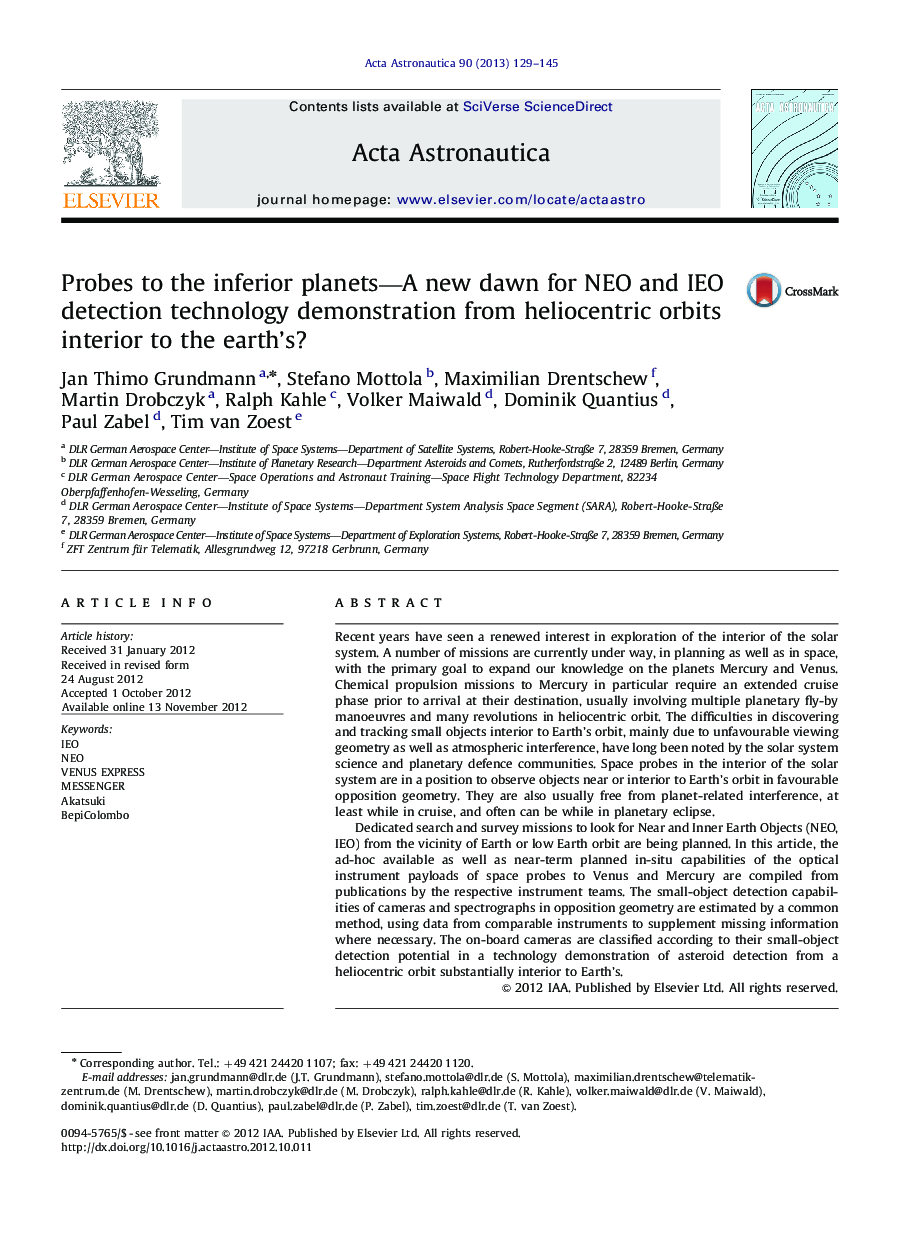| کد مقاله | کد نشریه | سال انتشار | مقاله انگلیسی | نسخه تمام متن |
|---|---|---|---|---|
| 1714976 | 1013347 | 2013 | 17 صفحه PDF | دانلود رایگان |

Recent years have seen a renewed interest in exploration of the interior of the solar system. A number of missions are currently under way, in planning as well as in space, with the primary goal to expand our knowledge on the planets Mercury and Venus. Chemical propulsion missions to Mercury in particular require an extended cruise phase prior to arrival at their destination, usually involving multiple planetary fly-by manoeuvres and many revolutions in heliocentric orbit. The difficulties in discovering and tracking small objects interior to Earth's orbit, mainly due to unfavourable viewing geometry as well as atmospheric interference, have long been noted by the solar system science and planetary defence communities. Space probes in the interior of the solar system are in a position to observe objects near or interior to Earth's orbit in favourable opposition geometry. They are also usually free from planet-related interference, at least while in cruise, and often can be while in planetary eclipse.Dedicated search and survey missions to look for Near and Inner Earth Objects (NEO, IEO) from the vicinity of Earth or low Earth orbit are being planned. In this article, the ad-hoc available as well as near-term planned in-situ capabilities of the optical instrument payloads of space probes to Venus and Mercury are compiled from publications by the respective instrument teams. The small-object detection capabilities of cameras and spectrographs in opposition geometry are estimated by a common method, using data from comparable instruments to supplement missing information where necessary. The on-board cameras are classified according to their small-object detection potential in a technology demonstration of asteroid detection from a heliocentric orbit substantially interior to Earth's.
► Spacecraft cameras currently in the interior solar system can detect NEAs and IEAs.
► Existing spacecraft can provide useful demonstration for future survey efforts.
► Existing spacecraft are not adequate for large-scale surveying.
► Planned spacecraft shows potential for limited and focused surveys.
► Best detection potential in high-resolution cameras, though small field of view.
Journal: Acta Astronautica - Volume 90, Issue 1, September 2013, Pages 129–145